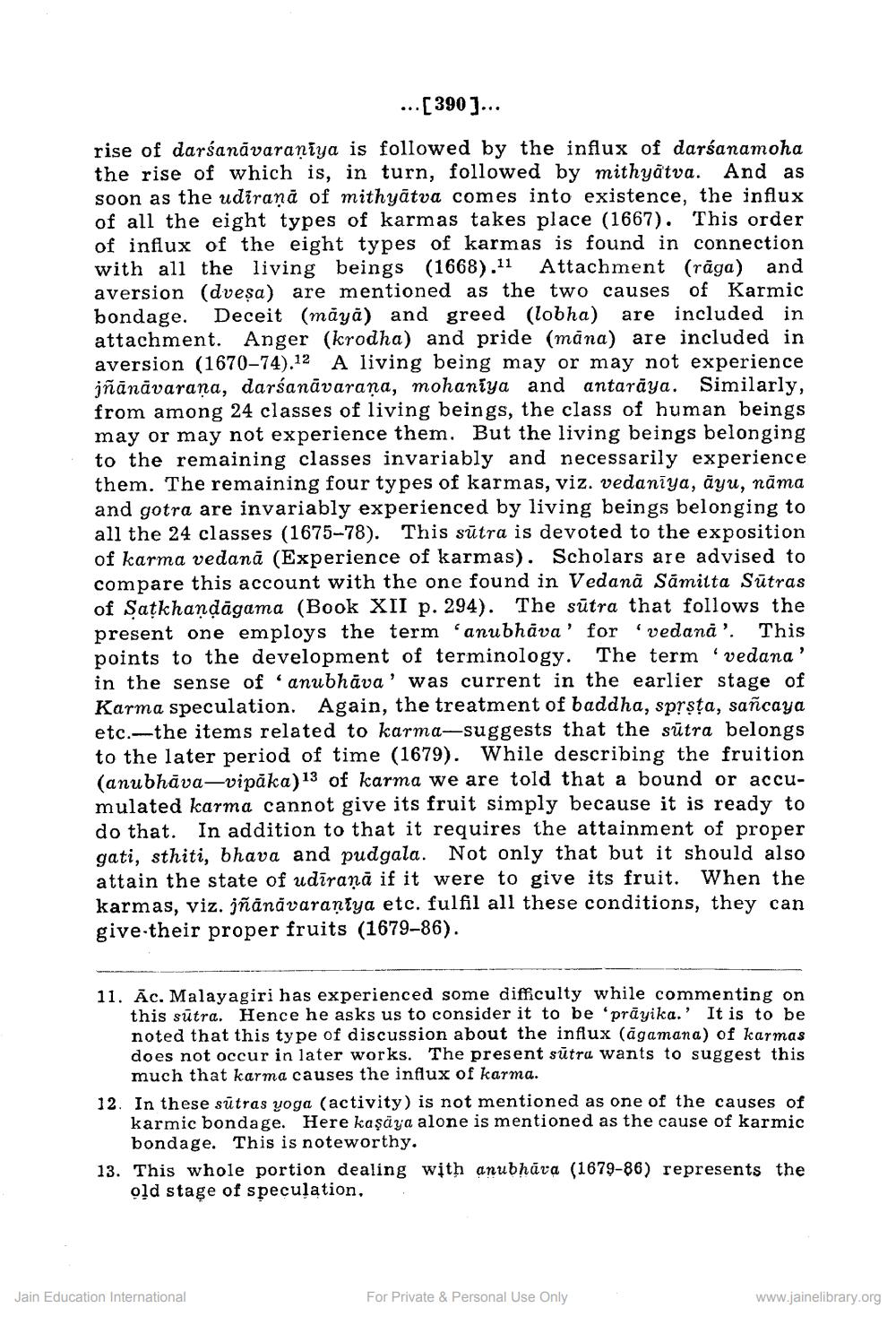________________
...[390]...
rise of darśanāvaraniya is followed by the influx of darśanamoha the rise of which is, in turn, followed by mithyátva. And as soon as the udiraņā of mithyātva comes into existence, the influx of all the eight types of karmas takes place (1667). This order of influx of the eight types of karmas is found in connection with all the living beings (1668).11 Attachment (râga) and aversion (dveşa) are mentioned as the two causes of Karmic bondage. Deceit (māyā) and greed (lobha) are included in attachment. Anger (krodha) and pride (mana) are included in aversion (1670-74).12 A living being may or may not experience jñānāvarana, darśanāvarana, mohaniya and antarāya. Similarly, from among 24 classes of living beings, the class of human beings may or may not experience them. But the living beings belonging to the remaining classes invariably and necessarily experience them. The remaining four types of karmas, viz. vedaniya, ayu, nāma and gotra are invariably experienced by living beings belonging to all the 24 classes (1675-78). This sūtra is devoted to the exposition of karma vedanā (Experience of karmas). Scholars are advised to compare this account with the one found in Vedanā Sāmitta Sūtras of Satkhandägama (Book XII p. 294). The sūtra that follows the present one employs the term anubhāva' for 'vedana'. This points to the development of terminology. The term 'vedana' in the sense of 'anubhava' was current in the earlier stage of Karma speculation. Again, the treatment of baddha, sprsta, sañcaya etc.- the items related to karma-suggests that the sütra belongs to the later period of time (1679). While describing the fruition (anubhāva-vipäka) 13 of karma we are told that a bound or accumulated karma cannot give its fruit simply because it is ready to do that. In addition to that it requires the attainment of proper gati, sthiti, bhava and pudgala. Not only that but it should also attain the state of udiranā if it were to give its fruit. When the karmas, viz. jñānăvarantya etc. fulfil all these conditions, they can give their proper fruits (1679-86).
11. Ac. Malayagiri has experienced some difficulty while commenting on
this sūtra. Hence he asks us to consider it to be 'prāyika.' It is to be noted that this type of discussion about the influx (āgamana) of karmas does not occur in later works. The present sūtra wants to suggest this
much that karma causes the influx of karma. 12. In these sūtras yoga (activity) is not mentioned as one of the causes of
karmic bondage. Here kaşaya alone is mentioned as the cause of karmic
bondage. This is noteworthy. 13. This whole portion dealing with anubhāva (1679-86) represents the
old stage of speculation,
Jain Education International
For Private & Personal Use Only
www.jainelibrary.org




